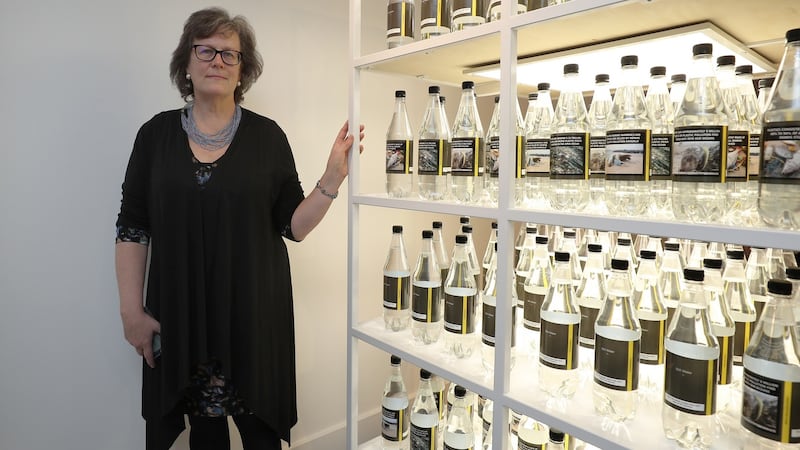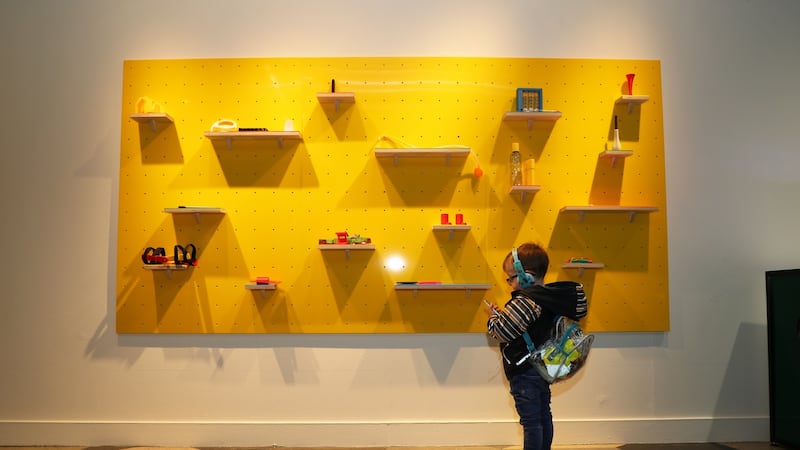Plastic: Can’t Live With It, Can’t Live Without It is a new exhibition at Dublin’s Science Gallery. It draws our attention to our complex relationship with this ubiquitous material. While a lot of focus of late has been on the environmental damage of single-use plastics – particularly on bird and fish life – the reality is that plastic is also used in a myriad of positive ways in industry and medicine.
"Plastic is so vilified now, but people underestimate the reliance we have on it for healthcare. Modern healthcare would be impossible without the many plastic-based medical products we take for granted, such as pills coated with plastic to control the release of the drug once ingested," says Prof Michael Monaghan, assistant professor of biomedical engineering at Trinity College Dublin.
Prof Monaghan, curatorial adviser to the Science Gallery exhibition, has helped create an exhibit on open-source plastic medical devices developed through 3D printing. He believes plastic is superior to many other materials, because it’s cheap and because each piece can be sterilised.
“Students in the master’s in bioengineering at Trinity design devices that are needed in healthcare (eg a diagnostic tool for malaria, or a box for the safe disposal of needles), and we upload their codes to our website so that anyone around the world can download them. 3D printing in a smart connected world allows us to 3D print anything we want in plastic,” he explains.
The biohybrid robotic respiratory simulator is another exhibit made from flexible plastic and electrics. It, too, highlights the role of plastic in healthcare. Markus Horvath from Massachusetts Institute of Technology says this particular model is used for teaching students as well as for inventing new medical devices.
“The impact of plastics in a destructive way is well documented but they are also used in medical technology to save lives,” says Horvath. Another exhibit is of 3D-printed plastic human organs, used by students to practise surgery.
Overconsumption
Several exhibits, however, focus on the overconsumption of plastic. One asks whether people would wear a self-tracking device that would capture their consumption of plastic and shame them or celebrate their results. Another has playfully constructed an environmental checkpoint to protect natural resources that people with plastics (even fleece jackets, chewing gum, and pens) would not be able to pass.

And an exhibit entitled The People’s Plastic is a shelving unit filled with plastic bottles with warning labels highlighting the damage single-use plastics do to the environment. Mindy O’Brien from the environmental NGO Voice says: “It’s a great idea, but I think such labels should also have information on the plastics used in packaging, because some chemicals leach into food.”
O’Brien, who works on initiatives to reduce plastic pollution, remains concerned about where much of single-use plastic ends up. “I think deposit-refund schemes are a good way of collecting plastic bottles for recycling but I’d really like to see deposit-refund schemes for reuse of plastic bottles. Ultimately, we need a paradigm shift where we look at the product (eg vending machines for water) rather than the packaging.”
A ban on single-use plastic items – including cotton buds, polystyrene cups, plastic cutlery and straws – is due to be imposed from 2021. Other EU legislation will require 50 per cent of plastic waste to be recycled by 2025 and all plastic to be easily recyclable by 2030. With these changes in mind, eco-designers are turning their attention to alternatives to petrochemical-based plastics and new uses for recycled plastic.
An exhibit entitled An Bó Bheannaithe (The Blessed Cow) shows how a byproduct of whey protein production can be used to create a compostable bioplastic. Visitors to the exhibition can also try making this bioplastic at workshops.
A tricycle made from prefabricated sheets of recycled plastic shows a potential new use for what might be a glut of recyclable plastics if and when the EU Single-Use Plastics Directive is enforced. An original 1968 Italian-designed Monobloc chair is also on show as an example of an easy-to-make, durable, low-cost stackable chair made from recycled plastic.
Innovative material
Abigail Murphy fromthe Environmental Protection Agency hopes the exhibition will raise awareness of plastic as an innovative material and not just something that is overconsumed. "Plastics are priority areas for [our waste prevention office], and we offer innovation grants for the circular economy [where materials are brought back into circulation rather than disposed of]."

Ruth Doyle, another curatorial adviser, who has a PhD in sustainable lifestyles and runs @missionzerowaste on Instagram, hopes the exhibition will promote conversations about overconsumption in general – of which the plastics problem is a symptom.
“There is a need for more ethical and conscious consumption, and this can be a gateway to awareness of other environmental issues. There are substitutes for a lot of plastic items – some of which are smart, modern alternatives such as reusable nappies. The problem is they are still niche products, so they need to be more readily available,” says Doyle.
And has the Science Gallery changed any of its own practices? "We used a sustainable events company when mounting the exhibition, which will tour to five locations around Ireland. This company planned the reuse of materials – 30 per cent of which is plastic – for schools, festivals and community centres once the exhibition is over," explains Aisling Murray, exhibitions manager at the Science Gallery.
The gallery has also recently added a composting bin alongside its general waste and recyclables bins, so that customers can dispose of compostable cups correctly. Next week, a hydration station will be installed. The Science Gallery cafe has also switched from plastic bottles to cans for all drinks sold on site.
Plastic: Can't Live With It, Can't Live Without It will run in the Dublin Science Gallery until February 9th, 2020, after which it will tour to Drogheda, Letterkenny, Wexford, Limerick and Galway. dublin.sciencegallery.com/plastic


















